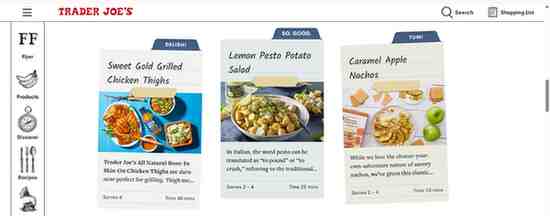At a time when retail giants like Amazon and Walmart have dominated the market for both online and in-store sales, Trader Joe’s has carved out a niche that’s not only surviving, but thriving. From crew members in Hawaiian shirts to shelves of no-frills, private-label products, the unique grocery chain has quietly built a cult following that will continue to grow in 2025.
So what is the secret behind Trader Joe’s? And what does it tell us about American consumer behavior and retail investing trends? Let’s discuss these things today
The Trader Joe’s Business Model: Less Is More
Unlike other grocery stores that carry 30,000+ items, Trader Joe’s stocks only about 4,000 carefully curated products—most of them under its own private label. This allows the company to keep prices low, maintain tight quality control, and deliver unique items customers can’t get anywhere else.
Whether it’s the famous “Everything But the Bagel” seasoning or the seasonal fan-favorite Pumpkin O’s cereal, shoppers feel like they’re part of a treasure hunt every time they walk in.
“You don’t go to Trader Joe’s with a list. You go with an open mind,” says food blogger Dana Harris, who tracks grocery trends in the U.S.
Financially Strong, Despite No Stock Listing
Interestingly, Trader Joe’s is privately owned and not publicly traded. The company was acquired by Germany’s Albrecht family (owners of Aldi Nord) in 1979, and it’s stayed out of the stock market spotlight ever since. That means average investors can’t buy stock directly—but that hasn’t stopped it from making waves in the U.S. retail economy.
According to 2025 industry reports, Trader Joe’s generated over $20 billion in annual sales, with steady year-over-year growth. In an inflation-sensitive economy, its low-price, high-quality reputation keeps customers loyal.
What Can Investors Learn?
Even though you can’t buy Trader Joe’s stock, the company’s success offers valuable lessons for retail investors:
1. Private labels are powerful
Look for public companies investing in their own branded goods. (Think Target’s Good & Gather or Costco’s Kirkland Signature.)
2. Experience matters
Trader Joe’s proves that customers want more than convenience—they want a feeling. Public companies that focus on customer experience often win in the long term.
3. Lean operations pay off
With no online store and minimal marketing, Trader Joe’s relies heavily on word-of-mouth. That’s a testament to efficient, cost-saving models.
Expansion Plans and Challenges
As of 2025, Trader Joe’s operates over 570 stores in the U.S., and demand continues to outpace supply. However, the company has remained cautious about expansion. It avoids rapid scaling to maintain its unique culture and supply chain control.
Some challenges on the horizon include:
- Labor concerns: As union efforts grow across the retail sector, Trader Joe’s has faced pressure from workers to raise wages and improve benefits.
- Sustainability expectations: Gen Z shoppers care deeply about climate impact. Trader Joe’s has made strides in reducing plastic packaging, but critics say there’s more work to be done.
Final Thoughts
In a market driven by technology and e-commerce, Trader Joe’s success is a reminder that simplicity, quality, and community still matter. Although you can’t invest in it directly, smart investors can study the model and apply its principles when evaluating publicly traded retail stocks. And one thing to always remember is that investing is a risky business, so think and research before doing it.
At the very least, it’s a great excuse to swing by your local store, grab a box of Dark Chocolate Peanut Butter Cups, and enjoy a slice of what makes American grocery shopping fun again.
1. What is Trader Joe’s new Dubai-style chocolate bar, and why is it trending?
Trader Joe’s recently introduced the Patislove Dubai Style Pistachio Dark Chocolate bar, inspired by the viral Pistachio Kataifi Chocolate Bar from Dubai’s FIX Dessert Chocolatier. Priced at $3.99, this affordable treat features dark chocolate filled with pistachio cream and crispy kataifi (shredded phyllo pastry). The product has garnered significant attention on social media platforms like TikTok and Reddit, leading to high demand and anticipation among customers.
2. Has Trader Joe’s discontinued any popular items recently?
Yes, Trader Joe’s has discontinued the Peruvian Style Chimichurri Rice with Vegetables, a beloved frozen meal known for its unique flavor profile and convenience. Fans have expressed disappointment over its removal from store shelves.
3. What are some new and returning products at Trader Joe’s in May 2025?
In May 2025, Trader Joe’s introduced several new items, including:
Teeny Tiny Strawberry Rhubarb Pies
Organic Guava Fruit Spread
Tarongino Frizzante (Valencia orange-infused sparkling wine)
Crunchy Chili Onion Toscano Cheese
Sparkling Tea & Lemonade
4. Is Trader Joe’s planning to open new stores in 2025?
Yes, Trader Joe’s announced plans to open 12 new stores across eight states and Washington D.C. in 2025, expanding their network beyond the existing 600 locations. The new stores aim to address customer concerns about crowded spaces and limited parking, with some locations featuring larger parking areas.
5. Does Trader Joe’s offer online shopping or delivery services?
Currently, Trader Joe’s does not offer online shopping, curbside pickup, or delivery services. They focus on providing a unique in-store shopping experience and do not sell products online.
6. How does Trader Joe’s maintain strong customer loyalty without a traditional loyalty program?
Trader Joe’s emphasizes a people-powered experience, with friendly and helpful staff creating a welcoming atmosphere. They focus on offering unique products, surprise seasonal items, and maintaining an authentic brand voice, which fosters emotional connections with customers and drives loyalty without relying on traditional loyalty programs.
7. What was the top product in Trader Joe’s 2025 Customer Choice Awards?
The Chili & Lime Flavored Rolled Corn Tortilla Chips were voted the #1 overall product in Trader Joe’s 16th Annual Customer Choice Awards for 2025, highlighting their popularity among customers.

